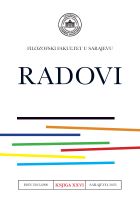
We kindly inform you that, as long as the subject affiliation of our 300.000+ articles is in progress, you might get unsufficient or no results on your third level or second level search. In this case, please broaden your search criteria.

This article seeks to establish a theoretical framework for considering how the collective and individual expressions of humour in social media spaces have been used and presented in the socio-political context of Jordan after the 2011 Arab Spring. This framework moves from the collective to the individual and makes Mikhail Bakhtin and Sigmund Freud complementary to the study of Jordanian social media humour after the Arab Spring. It argues that Mikhail Bakhtin’s theories of carnival and the carnivalesque (folk humour) have a functional similarity to Sigmund Freud’s theory of humour (release theory) because both seem to agree on the role of repression to influence the production of humour. Although repression is being understood differently (for Bakhtin it is political repression, which is usually a conscious decision, while for Freud it is self-repression, which is usually unconscious), humour can provide us with a strong mechanism for overcoming repression, or at least, giving the individual or the crowd the impression that they are challenging repression without necessarily challenging the status quo i.e., calling for regime change or revolution
More...
Informal use of anthroponymy is an integral part of the lexical resource of every language. The subject of this article is issues related to media onomastics (the review concerns terminology in internet forums). The aim of the article is the material exemplification of proper names, emphasising their formal features and ways of functioning on a specific communication plane.The task is to show certain tendencies and motivations in the field of creating virtual proper names in terms of their humorous value. In accordance with the adopted research perspective and the purpose of this article, when explaining the process of creating media onyms, reference was made to the mechanisms of name-forming derivation and the theory of humour, in particular the theory of incongruity. The specific communication channel creates new opportunities for language users and is an interesting research field for onomasts because, with the development of computer technology, the terminology began to go beyond the traditionally accepted standards
More...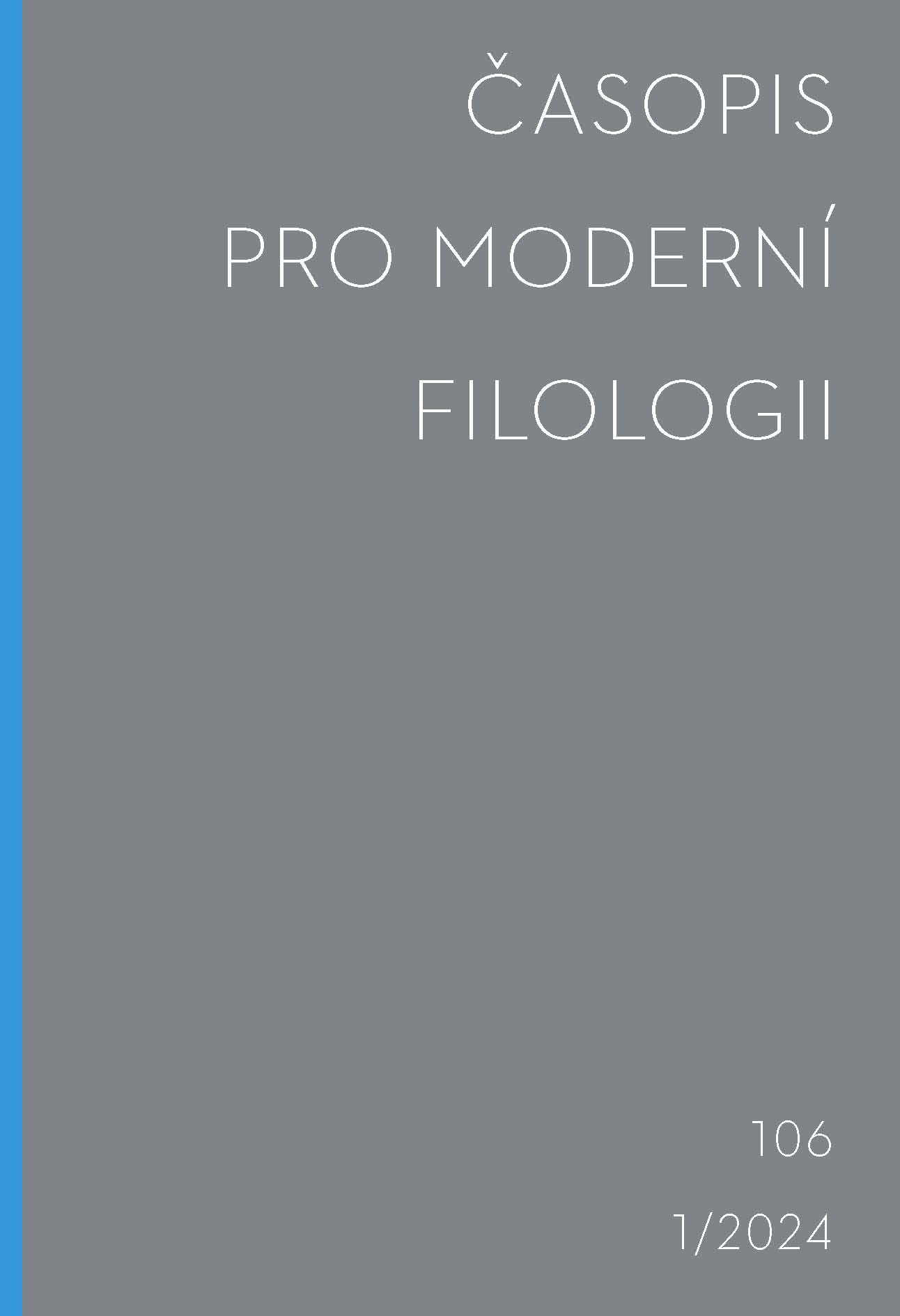
The article discusses the Chroma corpus, a newly published dataset capturing the spoken interactions of monolingual Czech children aged 19 to 49 months. This corpus fills a chronological gap in Czech language acquisition research and is part of the international CHILDES database. The Chroma corpus includes audio recordings of spontaneous interactions between children and their caregivers, recorded longitudinally over 11 to 27 months. These recordings are transcribed using the CHAT transcription system, which is standard for CHILDES. The corpus contains 99,388 tokens in children's utterances and 238,211 tokens in adult utterances. The transcriptions are annotated morphologically using the MorphoDiTa tool, allowing for detailed linguistic analysis. The Chroma corpus is a significant resource for studying various linguistic phenomena, including morphological and syntactic innovations, and contributes to the broader understanding of first language acquisition.
More...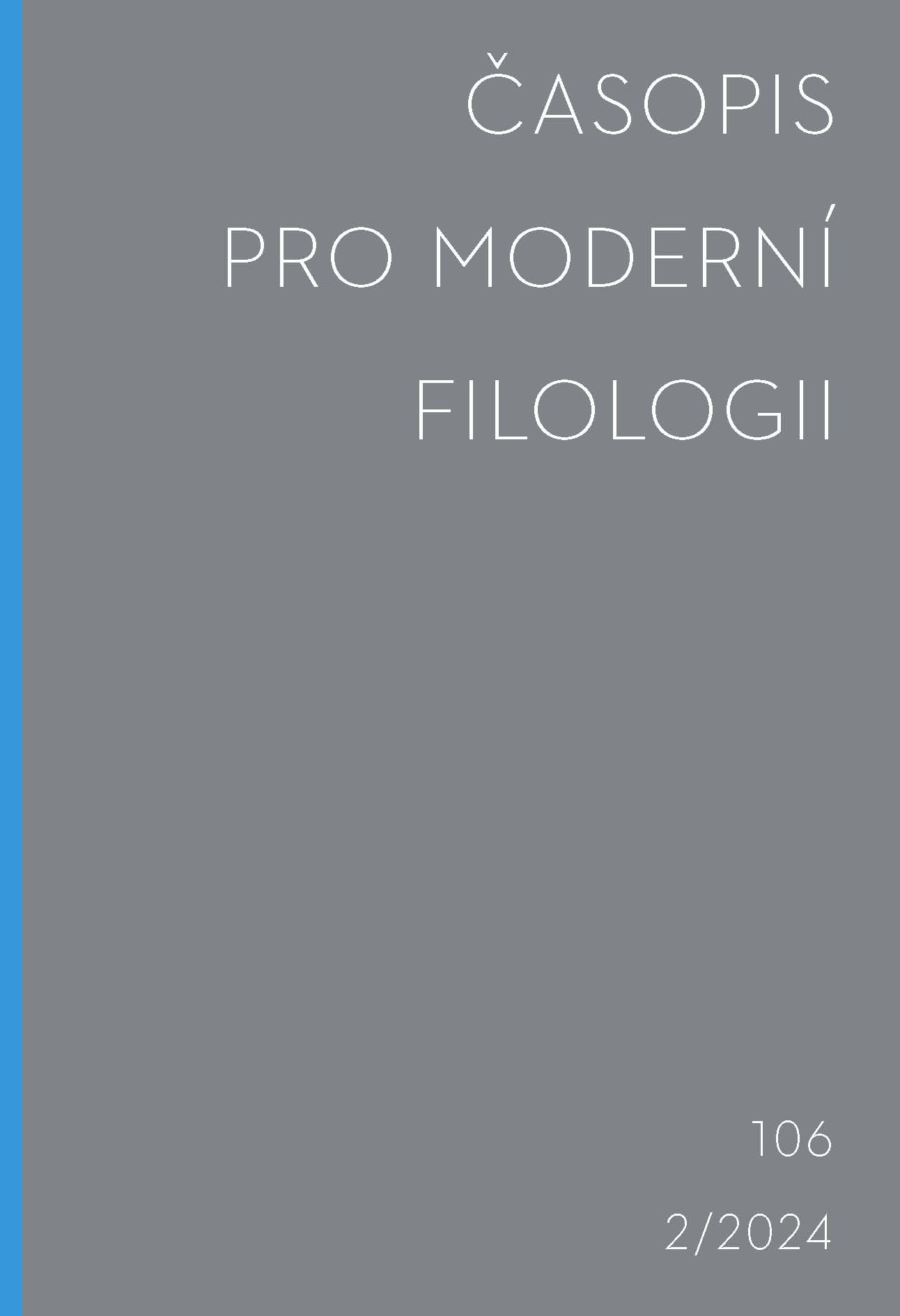
The article discusses the impact of the current European conflict on the Czech language, leading to the prioritization of military-related terms in the Academic Dictionary of Contemporary Czech (ASSČ). Traditionally, entries are published alphabetically, but due to societal needs, thematic entries like military terms are released earlier. This approach benefits both users and compilers by providing timely access to relevant terms. The article also highlights similar practices in foreign dictionaries, such as Merriam-Webster and Duden, which respond to current events by publishing relevant terms. The Czech neologism database, Neomat, has recorded numerous new words arising from the Russian aggression against Ukraine. The article concludes with a list of 15 selected military terms, emphasizing the importance of timely and relevant lexicographical work in response to societal changes.
More...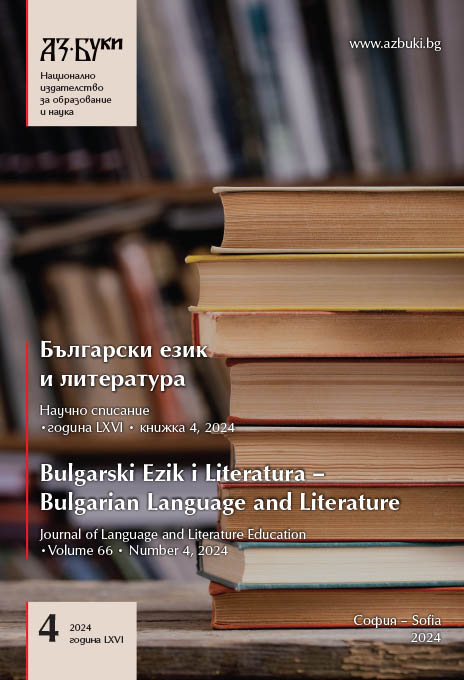
The paper is a continuation of previous research, which attempted to show that in the studied Bulgarian migrant languages in Ukraine and in the South Slavic languages there are several names that are related to Ukrainian Carpathian dialects. The aim of the paper is to investigate the white/red colloquialism in the ritual text of Bulgarian migrant languages in Ukraine and in the Carpatho-Balkan area. The object of the linguistic analysis is the folkloric discourse from the speech of the village of Vinogradovka (Burguzhi), Odesa region, Ukraine, which has not been the subject of scientific research so far. Dialectological material from the speech of the village of Kubey and some other Bulgarian migrant languages is used for comparison. The objects of the study are individual lexical items with the root *bel- : white rakija ‘sign that the bride was a virgin on the first wedding night’ and white mouse ‘weasel’. In order to achieve the goal, it was necessary, first of all, to make a brief description of the studied speeches, comparing them with other Slavic in the metropolia and in Ukraine. This necessitated the use of the descriptive method on the one hand and the comparative method on the other. Some more interesting manifestations of the verbal expression of the content of the main colours white and red in the folkloric discourse in the Bulgarian migrant speeches in Ukraine and in Metropolia are studied. These are: бяла Рада, бяла Мара, бял Димитър in Bulgarian speeches in Metropolia and bila dîvka, біла дівка, білий хлопець / білий легінь in Ukrainian Carpathian dialects – бяла/червена мишка and бяла/червена ракия. As a result of the research we came to the conclusion that the ritual text is the most favorable, if not the only sphere in which the meaning of words with the root *bel (бял) – ‘beautiful, pretty’ is realized, which is also fixed in the Carpathian languages of Ukraine. In the studied Bulgarian migrant languages we fix the variation of the lexemes white/red in the names of weasel and rakija: бяла / червена мишка and бяла / червена ракия. The colour red, considered beyond its relationship to white, is among the most widespread apotropaic colours in ancient cultures. This function is very widespread in Bulgarian folk life and folkloric discourse. The correlation between the pan-ethnic and the regional-local is traced, as well as the specificity of the ceremonial text. The examination of the semantic volume of the word бял `white` reveals the changes that have occurred in the development of individual meanings; in ceremonial discourse it is synonymous with the word червен `red`. The dialectal material we have brought forward can serve in the creation of the Enntolinguistic Dictionary of Bulgarians in Ukraine, highlighting the specific for Bessarabia.
More...
In addition to the theoretical study of the language, students of Czech studies in Vienna can also develop their practical knowledge of Czech by communicating with native speakers from the Czech minority. Students with different language backgrounds meet in the same class during their studies. We asked ourselves whether previous knowledge of the Slavic language is an advantage or disadvantage. We pointed out the typical manifestations of interference from German to Czech and showed what errors it causes and on which language levels.
More...
The traditional international meeting of young linguists, held at the Faculty of Arts of Palacký University in Olomouc on May 15-16, 2023, provided participants with an opportunity to reflect on a diverse array of ideas, discussions, and insights under the theme of an (In)comprehensible World. The main purpose of this meeting is to offer young linguists from around the world a platform to share and exchange their latest research, ideas, and findings in the field of linguistics. This year's conference focused on how language enables us to understand the world and share our thoughts, while also serving as a tool for manipulation and misinformation. The event highlighted the role of language in today's complex social and media context, examining how language and communication affect our ability to understand the world, present different worldviews, and the impact of cultural and generational differences on communication. The conference also explored the influence of non-verbal communication elements on message interpretation and the extent to which the current global situation affects language development. A plenary lecture by American cognitive linguist Laura Janda analyzed Vladimir Putin's speeches, focusing on the prohibition of the term "war" for the conflict in Ukraine and the use of grammatical cases in Russian discourse. The conference featured five specialized workshops and included a national round of the Student and Science: Linguistics competition, recognizing outstanding contributions from students.
More...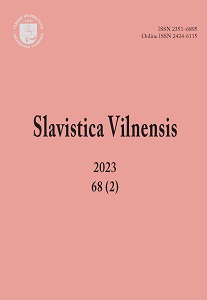
On October 13–14, 2023, the Second Student Readings were held at the Faculty of Philology of Vilnius University, organized by the Department of Slavic Studies of the Institute of Languages and Cultures of the Baltic Countries of the VU. Participants in the Readings were students and doctoral students from two Lithuanian universities (Vilnius and Klaipeda), from universities in Austria, Poland, Hungary, Switzerland, Croatia, France, Italy, who presented 19 reports. Student readings showed the undoubted potential of young researchers, their ability to make new discoveries in various areas of Russian and, more broadly, Slavic culture, literature, and language.
More...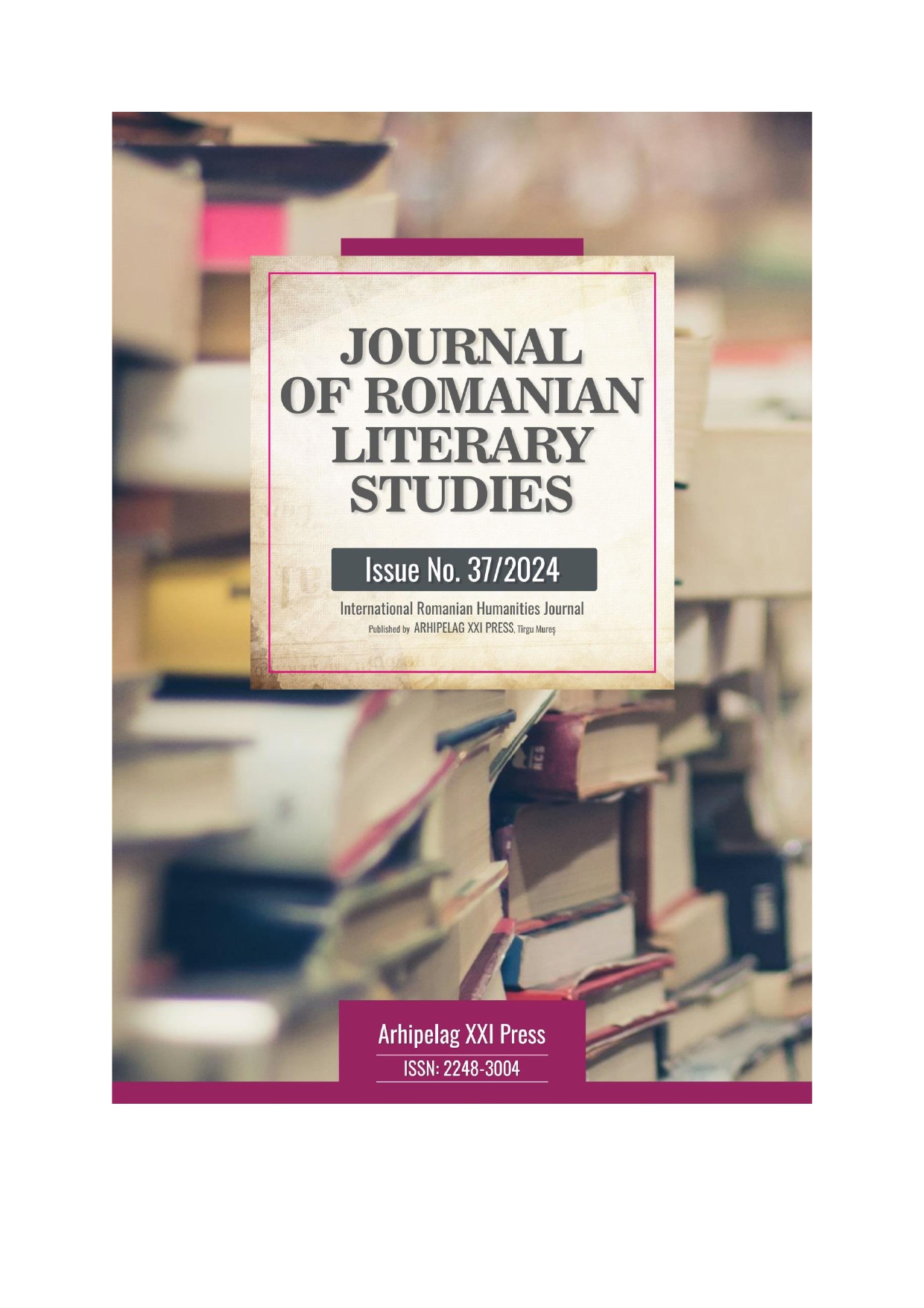
Reading the political articles in the current press, we find that the journalistic style has undergone strong changes, mostly after the year 2000. The Romanian press of the last two decades contains articles in which there is an interference of styles, but also from a thematic point of view one can notice the intermingling of the news with the subjuctive interpretation pushed to the extreme with the pertinent or less pertinent opinion of the journalist who cannot refrain himself from metaphors as rich in nuances as possible when presenting either political or social events.
More...
Given that several opinions have emerged in the literature over time according to which advertising addresses the irrational side of the public, this study aims to demonstrate that there is rationality even in types of advertising that at first glance do not target the consumers' rationality: emotional, mechanistic and integrative advertising. The study also aims to identify what types of rationality exist in these types of advertising, with reference to the Weberian theory of rationality, from which it focuses on instrumental rationality and value rationality. The main results of the research show that beyond the emotional impact that advertising has, the public is looking for rational objectives to purchase a product. These objectives are linked to the audience's values and its need to adapt to the demands of society. The study also shows that all types of advertising can be rationalised, as audiences do not automatically react to 'irrational' messages but decide on the basis of reasoning. Advertisers know this game of rationality and irrationality and use it frequently.
More...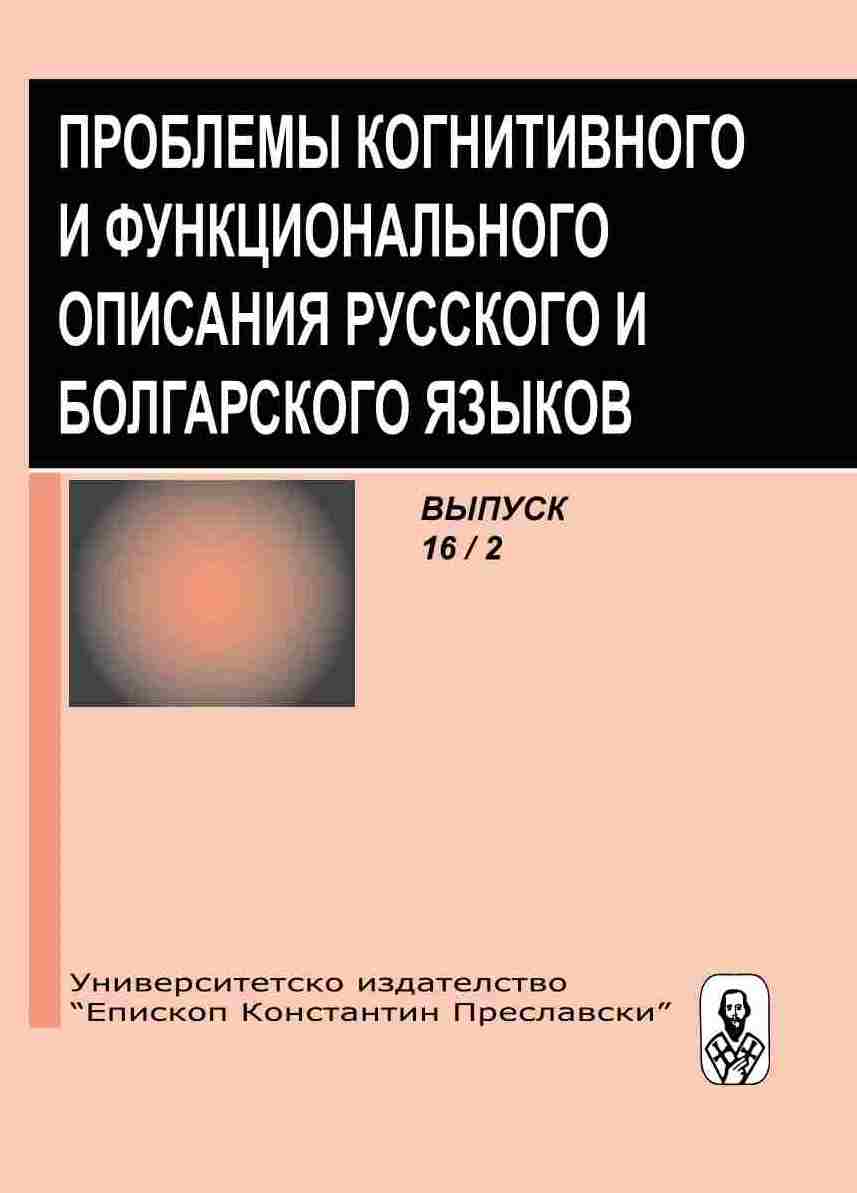
The paper is devoted to the study of the morphological method of word formation in the terminology of the oil and gas industry. The main traditional ways of term formation (suffixation, prefix and word composition) are analyzed in this study and the parts of speech used in the word-formation act of Russian terms in the oil and gas industry are examined. On the basis of conducted research, it can be argued that the terms of the oil and gas industry are formed according to the rules of word formation of commonly used vocabulary.
More...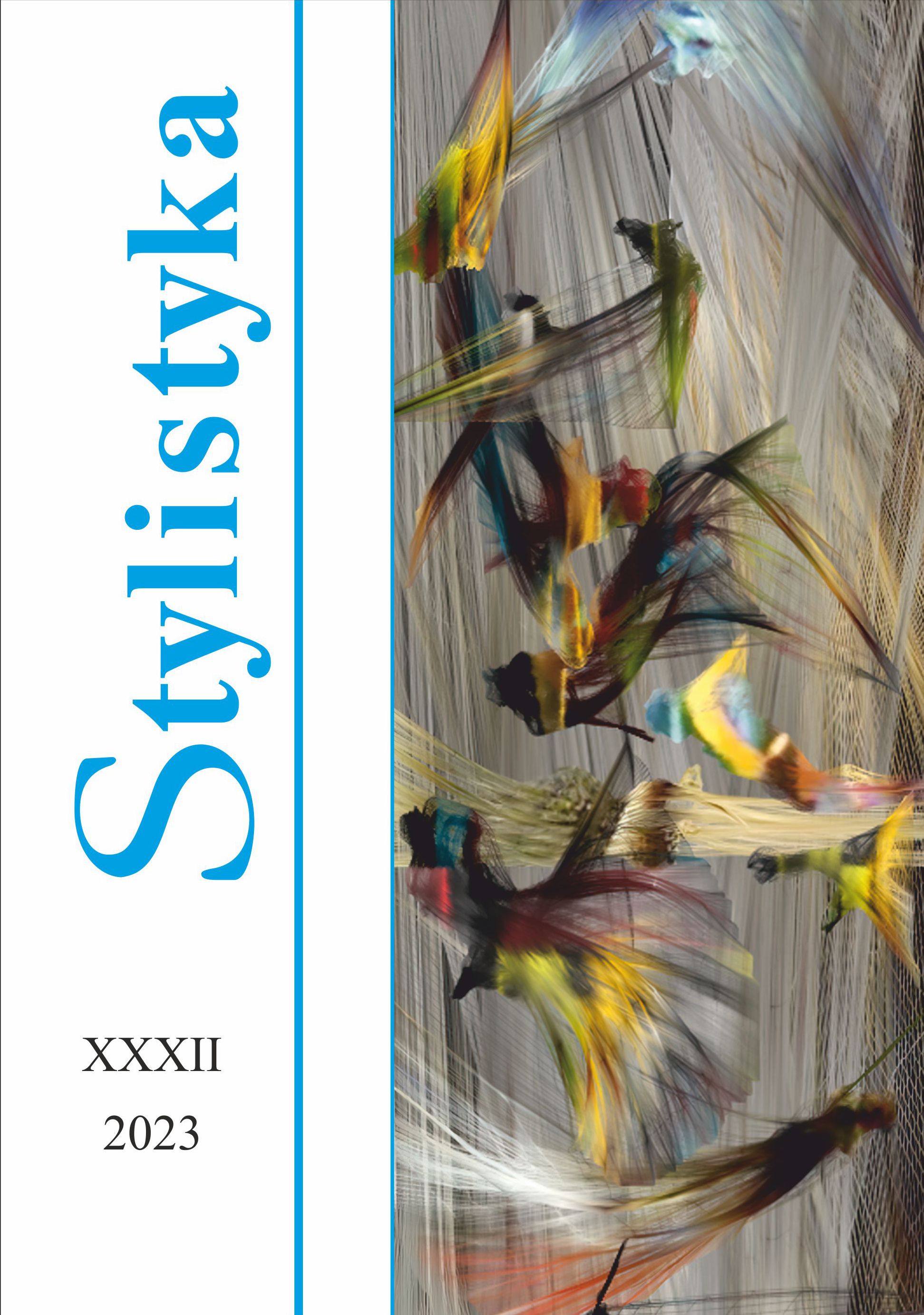
The aim of this article is to show a new perspective in diachronic research on communication in the legal and official sphere. Until now, research has focused on the style of texts related to this field of communication, but any analysis has been selective. The introduction of the category of discourse into historical linguistics allows for a more comprehensive view of the source material through the prism of the communication rituals in force at a given period and the principles of constructing texts with specific pragmatic aims and stylistic properties. The subject of the analysis is the records in the official town registers of the early 17th century concerning real estate purchase and sale transactions. Taking into account the continuity of the officialese discourse, the author shows how texts documenting property changes were formulated at that time and proves that certain structural and stylistic elements continue in the contract genre today. A broader study of the history of the discourse would make it possible to show the formation of new genre forms from pre-existing officialese expressions set in particular time, in a different legal system and communication patterns.
More...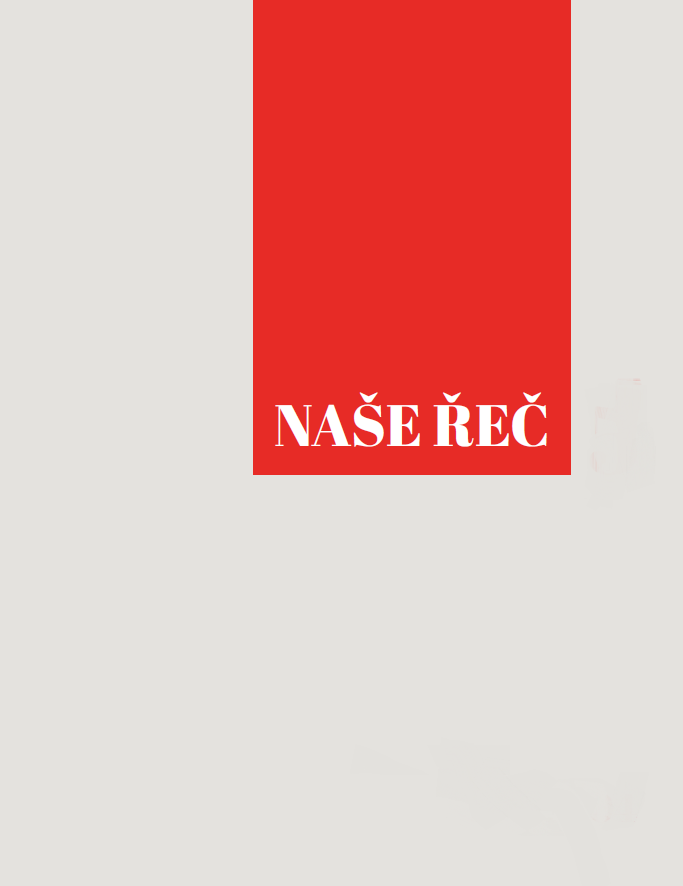
The Circle of Friends of the Czech Language held various events during the academic year 2023-2024, featuring lectures on diverse linguistic topics. Highlights included Tomáš Mikulka's presentation on newly identified Old Church Slavonic homilies, Jaromír Slomek's virtual tour of Prague related to Karel Havlíček and Božena Němcová, and Aleš Klégr's introduction to the Lexical-Semantic Database of Czech. Other notable talks covered innovations in Old Czech biblical translations, the influence of Romani on Czech, and the history of Czech sign language. The group also commemorated significant linguists and explored the intersection of language and politics in the context of Bohuslav Havránek's career. The academic year concluded with discussions on early Czech punctuation and the linguistic situation of the Jewish minority in 19th-century Bohemia.
More...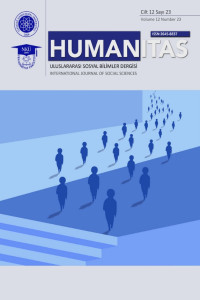
The Crimean Tatars, who have important commonalities with the Turkish region in terms of literary tradition, actually have an old tradition of lexicography and very valuable Crimean Tatar dictionaries have been published in the process. These dictionaries are mostly general in nature and also include glossaries of terms. Codex Kumanicus is accepted by Crimean Tatars as the first Crimean Tatar dictionary and work. Written in the 13-14th centuries, this work is one of the indispensable sources of Turkological studies. In the following years, valuable Crimean-Tatar dictionaries were prepared. Towards the end of the 19th century, another work titled Short RussianTatar Dictionary (Crimean dialect) was published. This dictionary was written especially for Russian tourists visiting Crimea and locals who did not know Crimean Tatar well. In the introduction of the work, various information about the dictionary is given: Approximately 2/3 of the words in the dictionary are composed of words used in spoken language. Apart from the dictionary, the main grammatical rules and phrases and sentences in Crimean Tatar are also included. In this dictionary Crimean Tatar words are written in Cyrillic alphabet. At a time when the Arabic alphabet was used among the Crimean Tatars, the publication of such a work in Cyrillic is very remarkable. However, the Cyrillic alphabet of Crimean Tatar words has made it difficult to express some sounds in Crimean Tatar language. In the end, the dictionary is a "guide dictionary". In our study, we will introduce this dictionary and examine it in terms of vocabulary.
More...
The article deals with the nuclear term of computer terminology computer, which is an anthropomorphic metaphor created on Eglish-American soil. Metaphorical transfer is one of the main methods of nomination and reflects the connection between cultural processes and language changes. The universal nature of this way of forming new concepts in the IT sphere and demonstration of its functioning as a mechanism of cognition, interaction of languages, consciousness and national-cultural specificity is reflected in conceptual metaphors computer-machine, computer-man, computer-mirror world.
More...
This article is devoted to the national and cultural aspects of the Russian linguistic personality phenomenon. The article is based on the material of the scientific research. The purpose is to identify the specific perception of the world by Russian linguistic personality and to analise phenomena, forming the lingvo-cultural field of Russian language (on the material of Vladimir region linguistic culture).
More...
The study targets exploring the similarities and differences between Iraqi and Malaysian learners of English in refusing marriage proposals. Also, it examines the favored politeness strategies that learners use to protect their interlocutors’ face, heeding both their social distance and status. Data were gathered by a Discourse Completion Task (DCT) which contained six marriage situations. Responses were analyzed based on Beebe et al.’s (1990) refusal taxonomy and Scollon et al.’s (2012) politeness system. The findings indicated that both the Iraqi and Malaysian learners preferred the indirect refusal strategies in marriage proposals, as well as the hierarchical politeness in the form of independence strategies regardless of the social status and distance between interlocutors. However, they differed in the sort of indirect strategies most frequently utilized. The Iraqi learners favored reason, regret, and non-performative statements, whilst the Malaysian learners preferred regret, non-performative statements, and reason.
More...
Healthcare professionals have the responsibility to regularly convey difficult information such as unfavourable diagnoses, as well as adverse treatment outcomes. While this task can be uncomfortable, successfully carrying it out plays a crucial role in determining patient outcomes (Sweeney et al. 2011: 230). This necessity has led to the creation of evidence-based protocols such as SPIKES developed by Baile et al. (2000). The goal of the paper is to explore the suitability of the genre-based approach for the study and teaching of medical English, focusing on the integration of the selected clinical communication tool into the ESP classroom. As this study stems from the ESP practitioner’s experience and its outcomes will directly influence her future ESP classroom teaching, action research has been conducted. The feasibility of using an authentic clinical tool in an ESP lesson was assessed through a two-step methodology: i) devising an ESP task based on the SPIKES protocol, emphasizing linguistic elements, and ii) obtaining student feedback focusing on the perceived usefulness of the tool. Overall, the collected data indicate that students acknowledged the significance of effective clinical communication for successful therapeutic practice. However, given the fact that medical English is inconveniently scheduled in a pre-clinical phase of their curriculum, they also exhibited a certain level of hesitancy, unsurprisingly, when it came to readiness in handling serious communication scenarios.
More...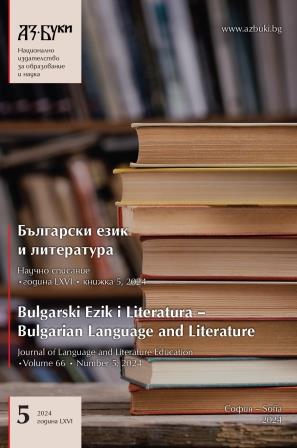
The article examines two lexemes from the speech of the Bulgarian Catholics of Belene, originating from rites and dances of the Orthodox population in the city, by which are named unacceptable actions. The examples are interesting for how confessional difference manifests itself through language, transforming neutral vocabulary into emotional-expressive with a negative or disapproving tone. By means of the word бръзъùцъ, related to the observance „Brazaya“, a mocking and contemptuous attitude towards a woman with a funny, ugly or scary face is expressed. The second example under consideration, èръйшалдъ, derives from a dance characteristic of the Orthodox population of Belene, and is used in a negative sense for a person who expresses his joyous emotions unrestrained or who is rebellious and stubborn.
More...